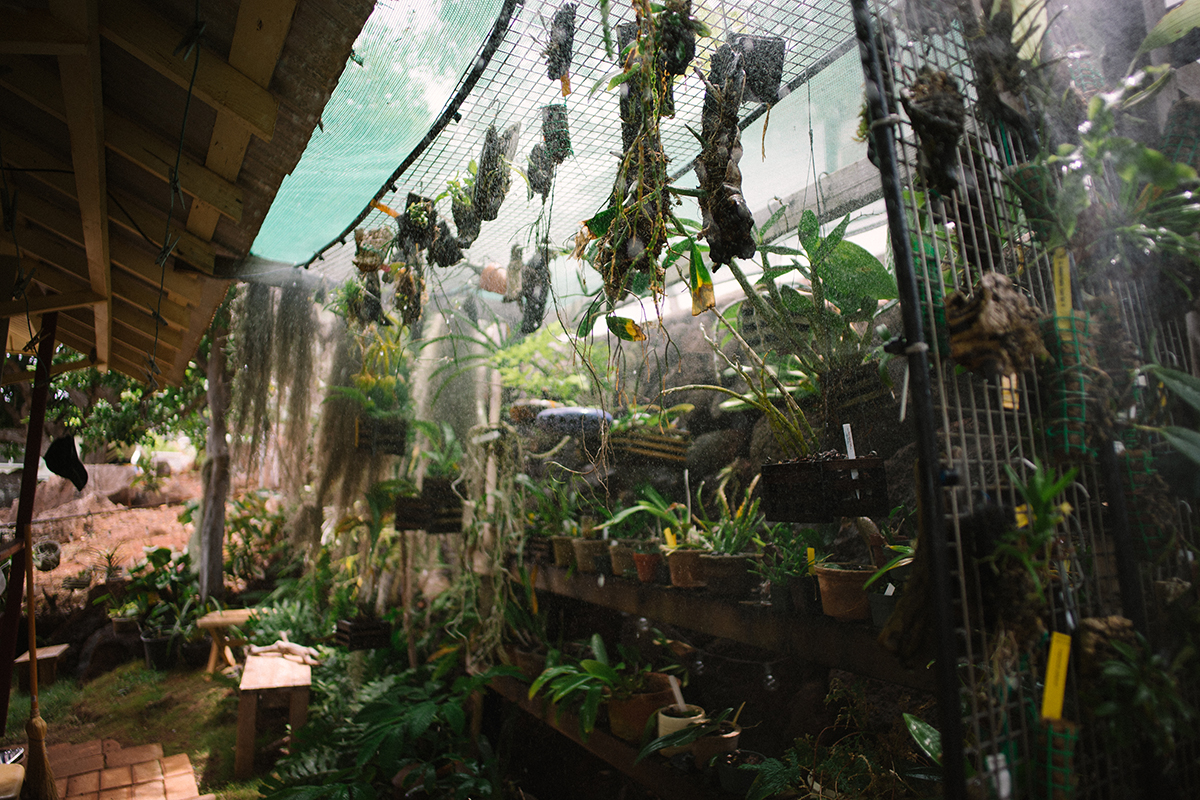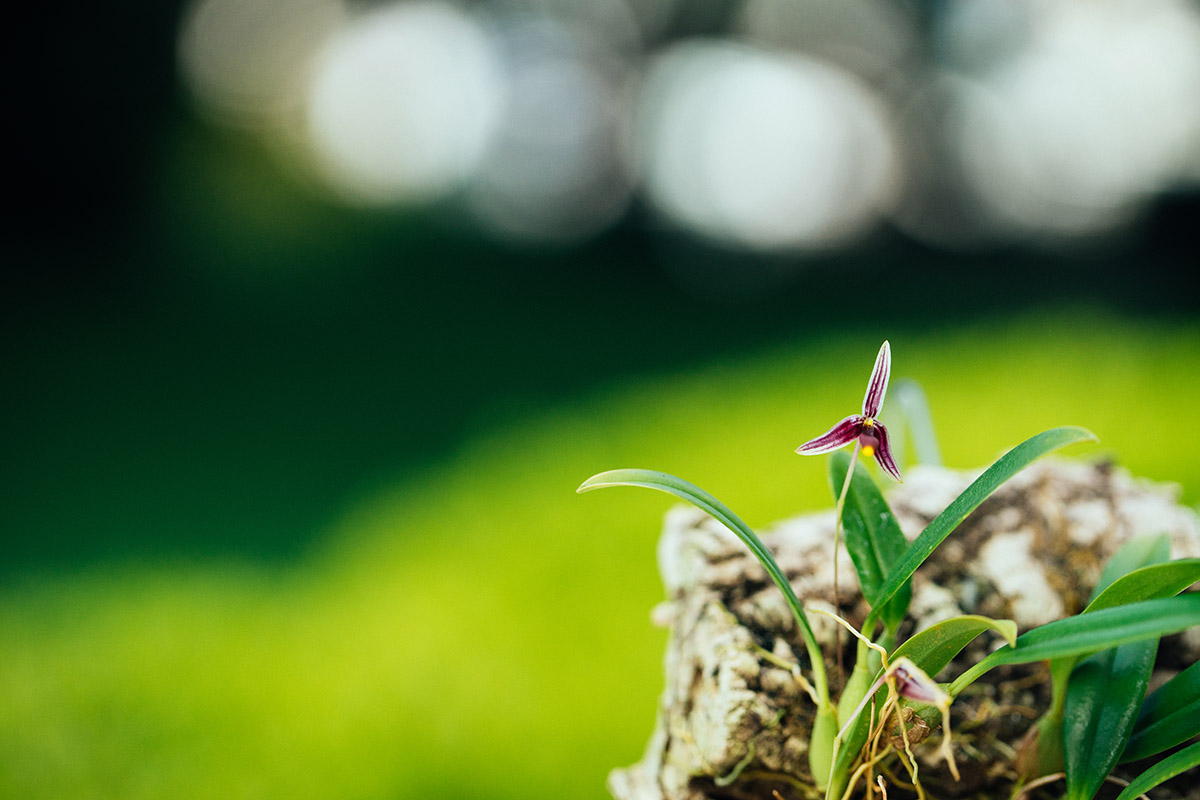On the outskirts of the orchid hobbyist scene, there lurks a growing presence of youth and renaissance.
The form, color, and shape. Simplified, these are the three qualitative attributes that most people look for in an orchid when judging its beauty and inherent worth. Orchidaceae is the most common and diverse of flowering plant families in the botanical kingdom. Typically, or perhaps stereotypically, their beauty tends to draw fans and enthusiasts from the elderly and retiree communities who have the time, patience, and experience required to grow the plant. It is ironic, given the astounding diversity and natural brilliance of the flower, that local orchid societies are generally comprised of a single demographic within the hobbyist culture. Surging out of the primordial vortex of naturalists, however, a new breed of hobbyists is arriving with fresh energy and vigorous exuberance, shattering the mold of grandpa puttering out back with the trowel.
Traditionally, when most people think of orchids in Hawai‘i, it conjures up connotations of the larger growing farms such as Kawamoto Farms, Akatsuka Orchid Gardens, Carmela Orchids, and H & R Nurseries in Waimanālo. In Hawai‘i specifically, the storied love affair horticulturists have with the flowering beauties spans back decades, including Steven Perlman and his crusade to restore the three indigenous species of orchid back to prominence (Anoectochilus sandvicensis, Liparis hawaiensis, and Platanthera holochila). Now, on the outskirts of the hobbyist scene, there lurks a growing presence of youth and renaissance.


Brad Hamasaki and Aaron Padilla are two such revolutionaries. They are the next evolution of the orchid-growing community on O‘ahu. Applying traditional methods, youthful vim, and a healthy dose of modern sensibility, the pair are exposing the art of orchid growing for what it is: an exercise in patience, an affirmation in the overflowing natural beauty around us, and an opportunity to share the trials, tribulations, and successes with each other.
Brad Hamasaki, 35, is a project manager for Lyle Hamasaki Construction and has been collecting orchids for almost four years. As the face of the revolution, he is a striking herald of a new generation of orchid hobbyist culture, a massive hulk of a man whose yeti-like appendages contain the gentle touch required to coax the flowers into bloom. He is a soft-spoken, easy-going giant with a penchant for bringing things to life.


What started off as an impulse-buy at his first orchid show has since evolved into an obsession. “Orchids are notoriously difficult to bring to bloom; that’s why they are so rewarding,” says Hamasaki. He took this new interest and ran with it, diversifying from growing just orchids into an even healthier intrigue of odd plants in general, including the amorphophallus, also known as the corpse flower. He began going to Oahu Nursery Growers Association shows at Thomas Square Park and Lyon Arboretum to hunt down and purchase plants. Like a kid with a new toy, he was buying as much as he could, and more. Now it is at the point that he barely has room for anything else at his house.
Hamasaki’s first foray into the botanical arts was growing herbs and spices on the lanai of his apartment to supplement his cooking hobby. As his interest in orchids and other horticultural endeavors grew, he adapted his experiences to suit the individual needs of his burgeoning orchid collection. Though Hamasaki is something of a purist and displays a visible distaste for the hybridization and bastardizing of species, he ad-libs the orchid-growing process to fit his busy lifestyle. For some of his plants that require rigorous and extensive caretaking, Hamasaki has rigged up varying apparatuses to aid with the watering and upkeep as he keeps up with the demands of his general construction job. Most traditionalists in the growing community wouldn’t dare play with such delicate necessities, exhibiting little variance in techniques they’ve developed over the decades, but Hamasaki doesn’t give a damn. For this messenger from the future of orchids, his ends justify the means. “A lot of the orchids I like have developed very specific evolutionary traits, and that’s what draws me to them,” says Hamasaki, who is well-versed enough to spout the virtues and characteristics of his favorite species at the drop of a hat. (At the moment, it is the Bulbophyllum epicranthes.) “Really, I just like weird stuff,” he says.
“Orchids have definitely changed me. I used to be all about the immediate-reward experience, but orchids have taught me patience.”
Brad Hamasaki


With a voracious appetite for the oddities that arise from the seemingly infinite possibilities of Darwinian evolution, Hamasaki seems to straddle the lines of both generations, resulting in an entirely different beast. Outside of the standard channels of the orchid societies in Hawai‘i, he finds himself both drawn to and pushed away from his older contemporaries. “I’ve had many occasions where I’ve gone to an orchid show, and the other growers will be like, ‘Wow, you collect orchids, but you’re so young!’” he says. “There is a whole knowledge base there that I don’t get to tap into, but their experience is invaluable considering how long the process is to actually bring an orchid to flowering.”
That’s where Aaron Padilla comes in. “I call him my orchid guru,” says Hamasaki. Aaron Padilla is the excitable and passionate curator of education at the Honolulu Museum of Art Spalding House. A bookish, smaller individual, Padilla is an artist known for his cloud sculptures and organic interwoven pieces. He is at once articulate—a thoughtful advocate for orchid-growing culture—and introspective, an optimist about the qualities of hobby growing.
Padilla grew up around nature, and the natural world has had a profound effect on his philosophy, hobbies, and his art as well. “I’ve always been around plants. My parents had a greenhouse where they grew orchids and anthuriums, so I grew up playing around in there.” Padilla’s initial interest in the natural world, however, began with fish. This translated into a job at a pet shop, where he would meet the man who would later become his mentor. “Aaron, you don’t want to get into orchids. It’s like crack!” he remembers the mentor telling him.


Years later, Padilla has become one of the tireless zealots forwarding the art with his intimate knowledge and his passion for creating. At a spry age of 39, he is one of the engines driving this renaissance and is acutely aware of the differences between his contemporaries and their elder rivals. “This young group that is burgeoning now has a youthful energy to it. There’s a little bit of a competitive nature to it so we push each other to be better growers. Of course we have our failures just as much as our successes, but it only drives us to be better and learn more.”
The orchid-growing process is a long and involved one, but immersing oneself in horticulture requires a slowing of pace and a devotion to learning. “To make art you have to do research, you have to have the technical background and expertise, then you have to apply that to achieve a completed piece,” says Padilla. “With orchids, it’s the same thing; you have to nurture it and give it the best possible environment to thrive with your knowledge and energy.”


Despite the amount of nurturing that goes into orchid rearing, Hamasaki says the plants have had a profound effect on him and his views on life. “Orchids have definitely changed me. I used to be all about the immediate-reward experience, but orchids have taught me patience.” Padilla reiterates that optimism: “I believe there is an orchid for everybody,” he says. Their efforts, in time, will also prove that there is more to an orchid grower than his or her shape, color, and form.

